Apple variety North Sinap
The North Sinap is a late winter apple variety with long-term storage of fruits. Obtained from the seeds of the Kandil-Kitayka variety by free pollination at VNIIS im. I. V. Michurin. The author of the variety is S.I. Isaev. The northern synap is zoned in the Central Black Earth, Middle and Lower Volga regions, as well as in stanza form - in the East Siberian. This variety is recommended for use in breeding work when creating fast-growing apple trees with long-term keeping quality of fruits. On the basis of the Northern Synap, varieties were bred: Orlovsky Sinap, Moskovskoe Zimnee, Moskovskoe Later, and some others. It tastes better than Crimean synapses (southern varieties).
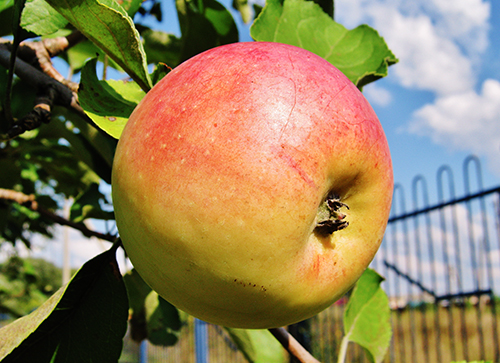
The trees are vigorous, grow to impressive sizes. The crown is of medium density, wide-pyramidal in shape, consists of several rather powerful skeletal branches and numerous thin side branches covered with perennial fruit wood. The color of the bark on the trunk and skeletal branches is gray.
Shoots of medium thickness, brownish tint, straight, medium pubescent, slightly geniculate. Lentils are small and present in small numbers. This apple tree is characterized by a mixed type of fruiting: on twigs, pods, annual shoots and spears. In the conditions of the nursery, the seedlings are gray-cherry in color, with small white lenticels. Leaves are dark green in color, with a slight grayish tint, shiny, medium-sized, wide, elongated obovate, with raised edges, largely pubescent. Petioles are of medium thickness, short, located at an acute angle to the leaf blades. Serration along the edge of the leaf blade serrate-crenate, with segments of 2 teeth or more. Stipules are of medium width, elongated.
The flowers are rather large, the petals are pink. The buds have a red tint.
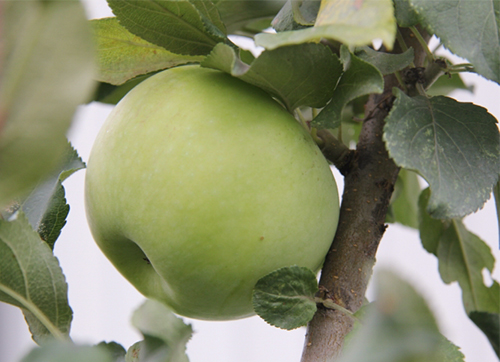
The fruits grow of medium size (the average weight of one apple is 120 grams, but it can fluctuate between 90 and 150 grams). In appearance, the apples of the Northern Sinap variety are quite neat, slightly oblong, from rounded-conical to glassy shape, with a smooth skin, which becomes oily during storage. The main color of the fruit is yellowish-green, the integumentary color is a brownish-red blush with an apple barrel illuminated by the sun. Numerous large subcutaneous dots of light color are clearly visible on the apple peel. The heart is large, elongated and bulbous. The seeds are rather large (more than average in size), brown, oblong-ovate. The stalk is medium in length and thickness. The funnel is smooth, narrow, of medium depth. Fruits with a closed calyx and a shallow saucer, medium width, lumpy in shape. The sub-cup tube is medium in length and thickness.
The apples are juicy, with a sour-sweet, refreshing, slightly spicy taste. The pulp is white or slightly greenish, fine-grained structure, medium density. The chemical composition of the fruits of this variety is as follows: sugars (11%), dry substances (15.8%), ascorbic acid (11.5 mg / 100 g), P-active substances (102 mg / 100 g).
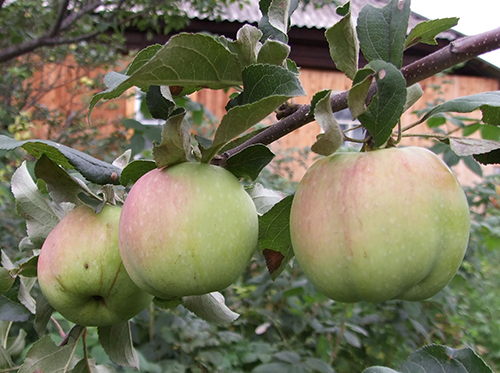
The period of removable maturity of the North Sinap apple tree falls no earlier than the beginning of October, and sometimes even later. It should be noted that apples need a sufficiently warm or even hot summer for full ripening. Experts have calculated the required amount of active temperatures for the growing season, which provides fruits of really high-quality taste characteristics - 2400 - 2500 degrees. It was also noted that to obtain apples with a particularly beautiful blush, warm summer and autumn are required with noticeable temperature changes (high during the day and close to zero at night). Therefore, you never need to rush to collect the Northern Sinap: if the fruits are removed unripe, then in addition to the deterioration of taste, they will be poorly stored (wither quickly).
Ripe fruits have a high storage capacity, they can be stored without problems until the end of May - beginning of June. Ideal storage conditions are refrigerated in a plastic bag at 0 - +1 ° C.In addition to fresh consumption, apples of this variety are widely used for technical processing - in the manufacture of juices, compotes, preserves and dried fruits.
The trees of this apple tree are distinguished by high rates of early maturity and productivity. After planting in the garden, fruiting in young apple trees begins at 5 - 8 years, on a dwarf rootstock much earlier - already for 2 years. In addition, on a dwarf rootstock, the commercial and taste characteristics of the fruit are noticeably improved. The yield from one 15-year-old tree is 120 - 170 kg of apples. At the same time, the fruits are quite tightly held on the branches and become smaller in high-yielding years. On 20-year-old trees, high yields alternate with medium and low yields.
North Sinup is an intensive type. Trees require regular maintenance. If you do not prune in time and do not feed the plantings, then the marketability of the fruits drops sharply, the size of apples becomes smaller, and fruiting becomes irregular. This variety is partially self-fertile. Productivity is much higher in mixed plantings.
The winter hardiness of the apple tree is high, only slightly inferior Antonovka ordinary. Average drought resistance and average resistance to scab and powdery mildew are noted.
The obvious advantages of the Northern Sinap variety are: excellent taste of ripe fruits and their outstanding keeping capacity, abundant harvest, winter hardiness, early maturity.
Among the main disadvantages of this apple tree are: large trees, deterioration of the commercial characteristics of fruits in years of bountiful harvest, late period of removable maturity, uneven fruits.
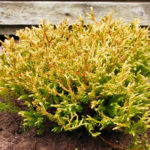

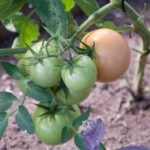

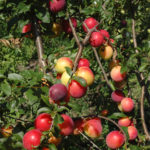
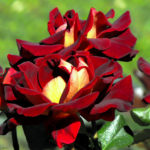



Delicious apples)
The variety is wonderful for our region! Tasty, high yields, fruits do not fall off, are not susceptible to diseases, including during storage. Winter-hardy for our harsh continental climate. But! It reveals the taste only when the summer is hot and long enough. A little colder, and the taste is not the same. I haven't been overjoyed at this apple tree for 15 years!